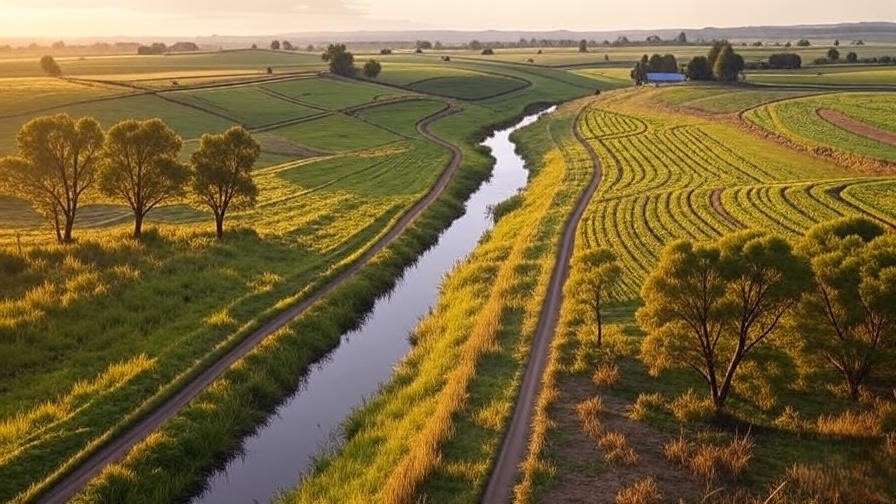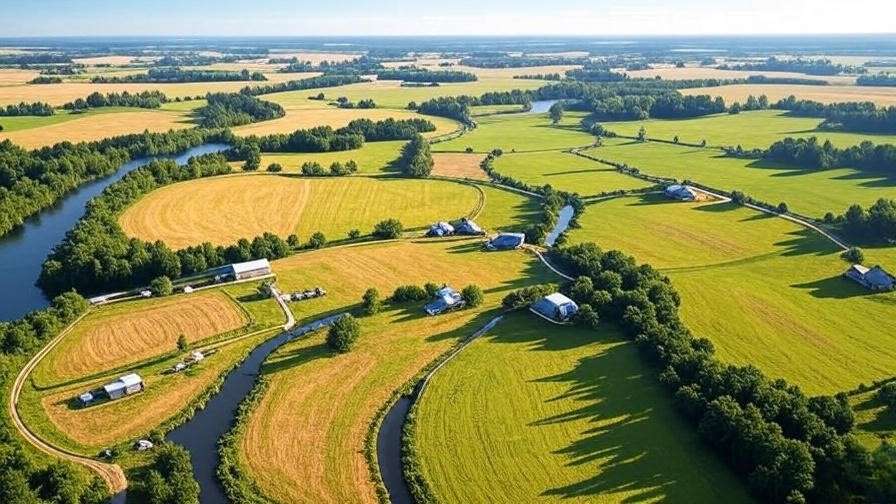Landscape Conservation Cooperative programs are transforming the way farmers, landowners, and communities protect agricultural landscapes while ensuring long-term productivity. Imagine standing at the edge of a farm that has been in a family for generations. The soil is rich, the crops are thriving, and the surrounding environment supports wildlife, clean water, and community wellbeing. Now imagine that same land in 20 years — paved over, eroded, or depleted beyond repair. This is the reality many rural regions face today, and why collaborative conservation strategies are more important than ever.
A Landscape Conservation Cooperative (LCC) is more than just an environmental initiative; it’s a strategic partnership model that unites farmers, landowners, scientists, and policymakers to protect agricultural landscapes while ensuring they remain productive for generations. In an era of climate uncertainty, resource depletion, and urban expansion, LCCs are becoming a vital tool for both farmland protection and agricultural sustainability.
In this article, we’ll explore the practical strategies, funding opportunities, and real-world examples of how LCCs can safeguard farmland, improve soil and water health, and strengthen rural economies — with actionable steps you can take to get involved today.
Understanding the Landscape Conservation Cooperative Model
History and Evolution of LCCs
The concept of Landscape Conservation Cooperatives emerged in 2009 under the U.S. Department of the Interior as part of a larger strategy to address large-scale environmental challenges. Recognizing that ecosystems and agricultural landscapes do not adhere to political boundaries, LCCs were designed to connect multiple stakeholders across regions to coordinate conservation planning and management.
Over time, the LCC model has evolved from a primarily government-led initiative into a broader network that includes private landowners, local governments, agricultural extension agencies, and non-profit organizations. Today, similar cooperative models are being adapted internationally to address farmland preservation and climate resilience.
Core Mission and Objectives
At their heart, LCCs aim to:
- Protect critical habitats and agricultural land.
- Improve the long-term productivity of working lands.
- Enhance biodiversity while supporting human livelihoods.
- Foster collaboration among diverse partners who share common conservation goals.
These objectives are particularly relevant in agriculture, where land productivity and ecological health are deeply interconnected.
Why Farmers and Landowners Should Care
For farmers, joining or partnering with an landscape conservation cooperative isn’t just about environmental stewardship — it’s a smart business decision. Benefits include:
- Long-term land value protection through sustainable use.
- Access to technical expertise and advanced agricultural research.
- Eligibility for conservation funding that reduces operational costs.
The Role of LCCs in Farmland Protection

Preventing Land Fragmentation
One of the greatest threats to productive farmland is land fragmentation — when large tracts are divided into smaller parcels for residential or commercial development. LCCs help address this issue by:
- Promoting agricultural conservation easements that permanently protect land from non-farm development.
- Coordinating regional land-use planning to balance economic growth with farmland preservation.
- Encouraging clustered development that leaves more land available for farming.
Addressing Soil Erosion and Degradation
Healthy soil is the foundation of agricultural sustainability. LCCs support farmers in adopting practices such as:
- Cover cropping to prevent erosion and improve organic matter.
- Conservation tillage to reduce soil disturbance and maintain structure.
- Riparian buffer zones to protect waterways from sediment and nutrient runoff.
These measures not only preserve farmland but also improve yields over time.
Supporting Water Resource Management
Water is a shared resource, and LCCs often take a watershed-wide approach to ensure equitable and sustainable use. Strategies include:
- Coordinated irrigation efficiency programs that reduce waste.
- Rainwater harvesting systems to supplement supply.
- Restoring wetlands and floodplains to improve water retention and reduce flood risk.
Practical Strategies for Successful Landscape Conservation

Building Strong Partnerships
The success of any LCC hinges on collaboration. Key steps include:
- Engaging local farmers and ranchers early in the planning process.
- Partnering with agricultural extension offices to provide technical training.
- Involving environmental NGOs and research institutions for ecological expertise.
Example: In the Prairie Pothole Region of the U.S., farmers worked with conservation groups and government agencies to implement a landscape-scale approach that preserved wetlands while maintaining productive farmland.
Adopting Sustainable Agricultural Practices
Sustainable farming methods not only conserve natural resources but also enhance resilience to market and climate fluctuations. Effective practices include:
- Crop diversification to reduce pest pressure and improve soil health.
- Agroforestry systems that integrate trees and shrubs into crop and livestock operations.
- Integrated Pest Management (IPM) to minimize chemical use and protect beneficial species.
Leveraging Technology for Monitoring and Planning
Modern tools can make landscape conservation more efficient and data-driven:
- GIS mapping to identify priority conservation areas.
- Drone surveys to monitor crop health and land changes.
- Precision agriculture to optimize inputs and reduce waste.
Funding and Incentive Opportunities for LCC Initiatives

Government Grants and Subsidies
Many LCC activities are eligible for financial support through programs such as:
- USDA Natural Resources Conservation Service (NRCS) cost-share programs.
- State-level farmland preservation funds.
- Federal climate resilience grants.
Private Sector and NGO Partnerships
Corporations with sustainability commitments often fund agricultural conservation initiatives. NGOs may also offer microgrants or technical assistance for specific projects.
Community-Based Funding Models
Some LCCs create cooperative investment funds where local farmers, businesses, and residents pool resources for land protection projects. Crowdfunding campaigns can also raise awareness and support.
Measuring the Impact of Landscape Conservation Efforts

Environmental Indicators
A successful LCC initiative should show measurable ecological benefits. Common indicators include:
- Biodiversity counts — tracking pollinators, bird species, and beneficial insects.
- Water quality monitoring — measuring sediment, nutrient levels, and contaminants.
- Carbon sequestration rates — estimating the amount of CO₂ captured in soils and vegetation.
These indicators help stakeholders understand whether conservation strategies are working and where adjustments are needed.
Economic Indicators
Farmers often need to see the financial benefits of conservation. Key metrics include:
- Yield stability over multiple seasons.
- Reduced input costs from efficient fertilizer, water, and pest management.
- Premium market opportunities — such as “sustainably grown” or “conservation-certified” products.
Social and Cultural Indicators
LCCs can strengthen rural communities through:
- Increased farmer participation in decision-making.
- Preservation of agricultural heritage and traditional farming knowledge.
- Greater community engagement in local food and conservation programs.
Overcoming Challenges in Implementing LCC Programs
Policy and Regulatory Barriers
Differences in land-use laws and agricultural policies can slow cooperation. Solutions include:
- Advocating for uniform zoning standards across jurisdictions.
- Creating policy advisory boards within LCCs to guide compliance.
Funding Gaps and Resource Constraints
While grants help, they are often competitive and short-term. LCCs can:
- Diversify funding sources through public-private partnerships.
- Implement self-sustaining revenue models such as eco-tourism or sustainable product branding.
Balancing Short-Term Needs with Long-Term Goals
Farmers may be hesitant to adopt practices that require upfront investment. LCCs should:
- Provide cost-share programs or loan assistance.
- Offer trial plots to demonstrate tangible results before wider adoption.
Real-World Examples of Successful Landscape Conservation Cooperatives
Case Study 1 — Prairie Pothole LCC (United States)
This LCC brought together farmers, wildlife agencies, and conservation groups to preserve critical wetlands while improving farmland drainage and soil fertility. Farmers reported higher yields and reduced flood risk, while waterfowl populations rebounded.
Case Study 2 — Murray-Darling Basin LCC (Australia)
Faced with severe water scarcity, this cooperative implemented basin-wide water-sharing agreements, modernized irrigation systems, and restored riparian habitats. The result: improved water efficiency by 30% and increased agricultural resilience during droughts.
Lessons Learned and Best Practices
- Early stakeholder engagement builds trust.
- Clear communication of benefits increases farmer participation.
- Adaptive management ensures strategies evolve with new data and conditions.
Expert Tips for Farmers to Get Involved in LCC Initiatives
How to Identify Local LCC Opportunities
- Contact your county agricultural extension office.
- Search USDA or regional conservation networks.
- Attend local environmental and agricultural forums.
Steps to Join or Start a Cooperative
- Identify common challenges — such as soil erosion or water scarcity.
- Gather stakeholders — farmers, NGOs, local officials.
- Develop a shared vision and measurable objectives.
- Apply for funding from multiple sources.
Networking with Conservation Professionals
- Join agricultural trade associations that promote conservation.
- Participate in online forums and social media groups for sustainable farming.
- Attend field days and demonstration events hosted by research institutions.
Future Outlook — The Evolving Role of LCCs in Global Agriculture
- Climate Change Adaptation: LCCs are expected to play a key role in helping farmers adapt to unpredictable weather patterns.
- Integration with Regenerative Agriculture: More cooperatives are combining conservation with regenerative practices to rebuild soil health.
- Policy Trends: Governments are increasingly recognizing LCCs as cost-effective tools for meeting national sustainability goals.
- International Collaboration: Cross-border conservation initiatives are emerging, especially in shared watershed regions.
Frequently Asked Questions (FAQs)
Q1: What is the difference between an LCC and a farmer’s cooperative?
An LCC focuses on landscape-scale environmental and agricultural conservation, while a farmer’s cooperative typically centers on marketing, purchasing inputs, and improving farm profitability.
Q2: Can small-scale farmers benefit from joining an LCC?
Absolutely. Small farms often gain access to expertise, funding, and resources they wouldn’t have individually.
Q3: How do LCCs secure long-term funding?
Through a mix of government grants, private sponsorships, membership contributions, and revenue-generating conservation projects.
Q4: Are LCCs effective in developing countries?
Yes, especially when adapted to local socio-economic conditions and when supported by community-driven governance.
Conclusion — A Call to Action for Sustainable Agricultural Landscapes
The challenges facing modern agriculture — from land loss to climate change — require more than individual action. Landscape Conservation Cooperatives offer a proven, collaborative framework for protecting farmland, boosting productivity, and ensuring environmental resilience.
For farmers, landowners, and policymakers, now is the time to act. By joining or starting an LCC, you can safeguard your land, strengthen your community, and contribute to a sustainable agricultural future.
Whether you manage hundreds of acres or a small family plot, the principles of landscape conservation can work for you. The key is collaboration, innovation, and a shared commitment to protecting the landscapes that feed and sustain us all.













